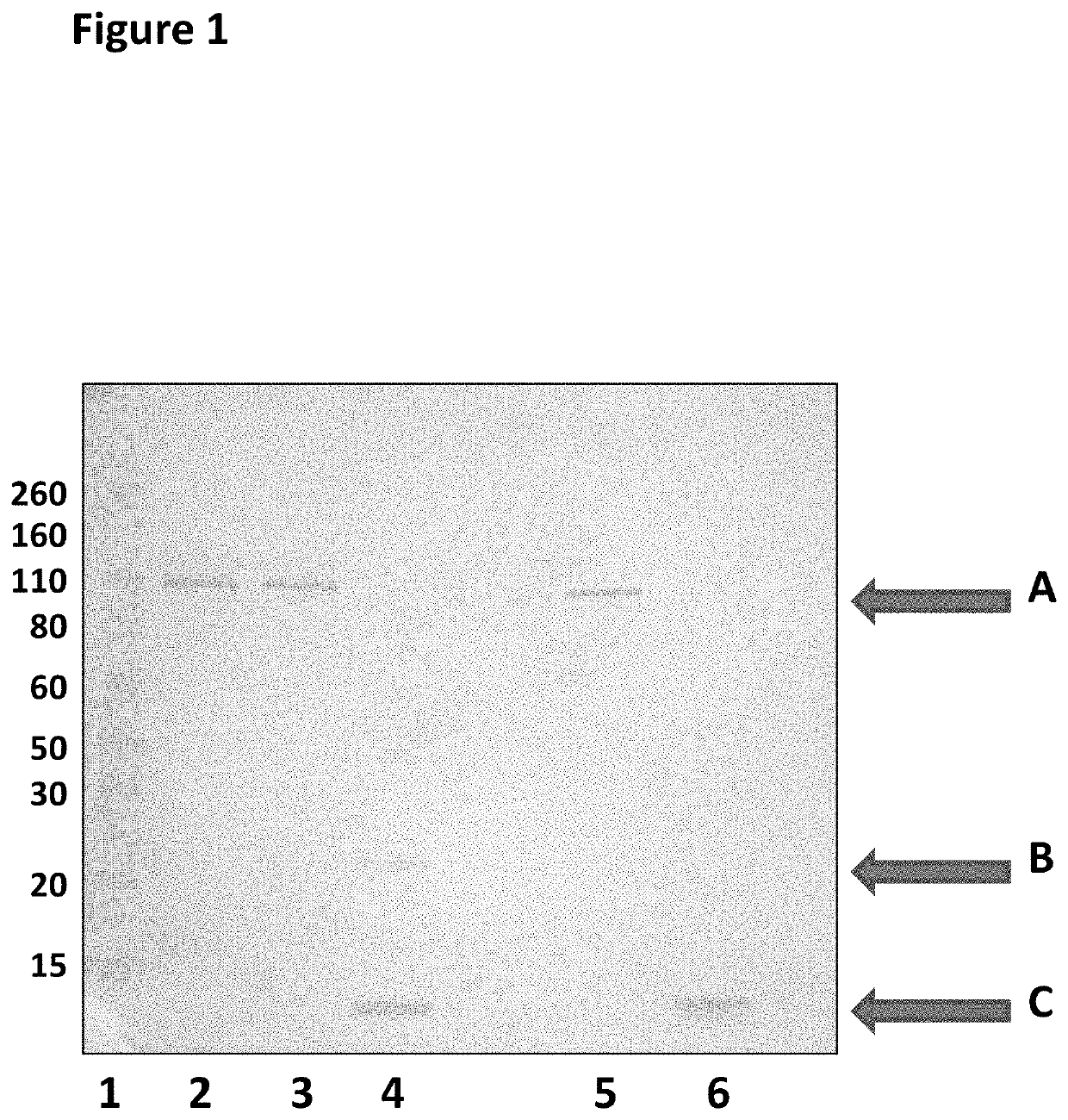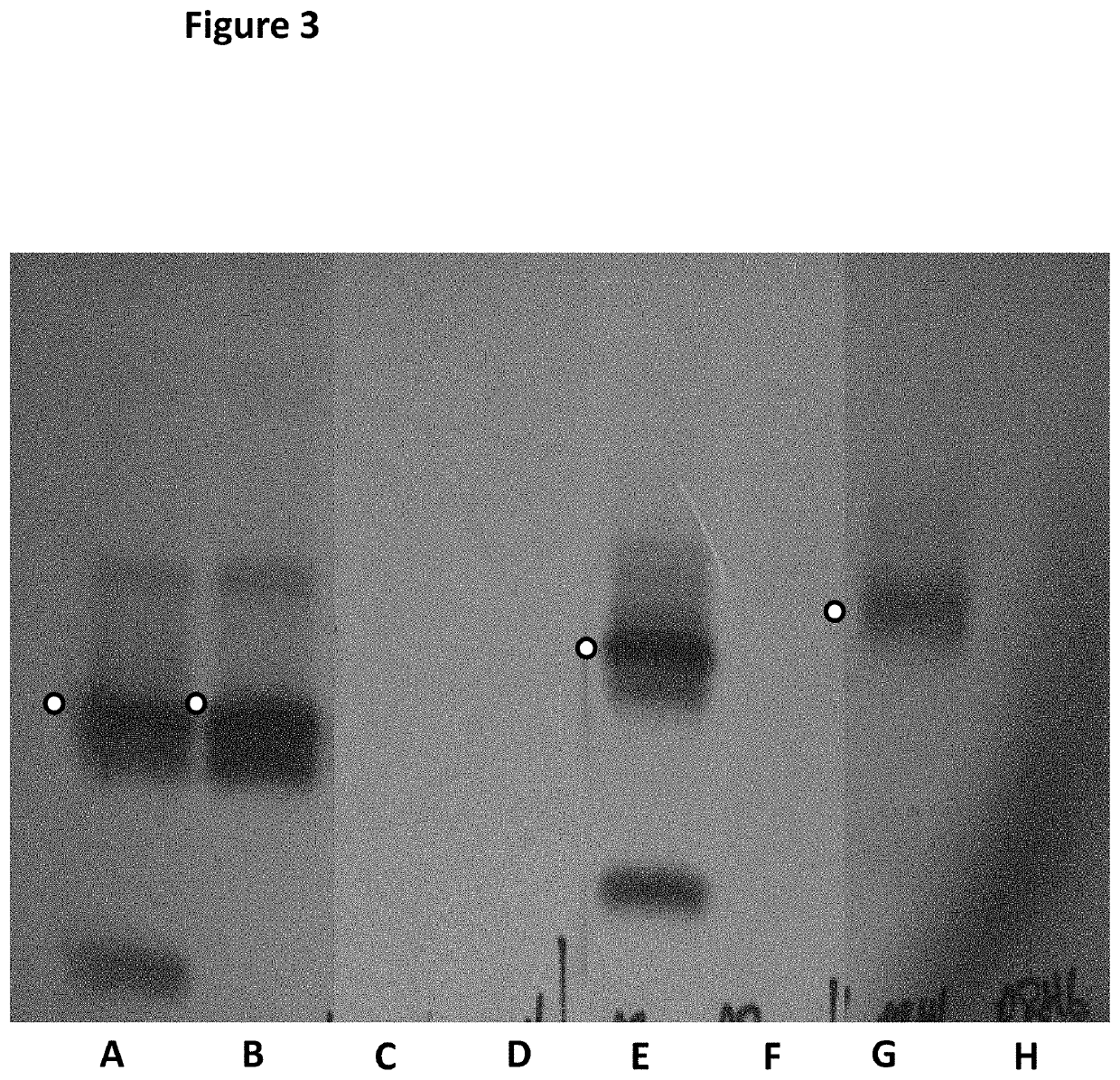Method
a technology of heterooligomer and pores, applied in the field of producing heterooligomer pores, can solve the problems of slow and expensive existing technologies
- Summary
- Abstract
- Description
- Claims
- Application Information
AI Technical Summary
Benefits of technology
Problems solved by technology
Method used
Image
Examples
example 1
[0448]This example describes a scaled up E. coli purification method that was used to purify an MspA hetero-oligomeric pore. The production of the mutant hetero-oligomeric nanopore MspA 1=MspA—((Del-L74 / G75 / D118 / L119)D56N / E59R / L88N / D90N / D91N / Q126R / D134R / E139K)7((Del-L74 / G75 / D118 / L119)D56N / E59R / L88N / D91N / Q126R / D134R / E139K / BasTL)1 (SEQ ID NO: 2 with the following mutations in seven monomers D56N / E59R / L88N / D90N / D91N / Q126R / D134R / E139K and deletion, of the following amino acids in seven monomers L74 / G75 / D118 / L119 and the following mutations in one monomer of D56N / E59R / L88N / D91N / Q126R / D134R / E139K / BasTL, where the BasTL has SEQ ID NO: 26 and is attached at the C-terminus, and deletions of the following amino acids in one monomer of L74 / G75 / D118 / L119) is described below. This method is suitable for making other hetero-oligomeric nanopores.
[0449]DNA encoding the polypeptide (SEQ ID NO: 27) for MspA—((Del-L74 / G75 / D118 / L119)D56N / E59R / L88N / D90N / D91N / Q126R / D134R / E139K) (SEQ ID NO: 2 with the fol...
example 2
[0462]This example describes a control experiment which showed that co-transformation and subsequent controlled expression of the two monomers was necessary to obtain the hetero pores of interest. Two subunits which were transformed individually, but grown together in the same culture did not produce hetero-oligomeric pores.
[0463]DNA encoding polypeptide (SEQ ID NO: 27) MspA—((Del-L74 / G75 / D118 / L119)D56N / E59R / L88N / D90N / D91N / Q126R / / D134R / E139K) (SEQ ID NO: 2 with the following mutations in the monomer D56N / E59R / L88N / D90N / D91N / Q126R / / D134R / E139K and deletion, of the following amino acids in the monomers L74 / G75 / D118 / L119) and DNA encoding polypeptide (SEQ ID NO: 28) MspA—((Del-L74 / G75 / D118 / L119)D56N / E59R / L88N / D91N / Q126R / / D134R / E139K) (SEQ ID NO: 2 with the following mutations in the monomer D56N / E59R / L88N / D91N / Q126R / / D134R / E139K and deletion, of the following amino acids in the monomers L74 / G75 / D118 / L119) were cloned into the pT7 vector containing ampicilin resistance gene. The two DNA...
example 3
[0466]This example described a number of different conditions which were investigated in order to identify the optimised ratio of IPTG: Rhamnose that favoured stable 7:1 hetero pore formation.
[0467]In brief, pRham vector containing DNA encoding the polypeptide (SEQ ID NO: 29) for MspA—((Del-L74 / G75 / D118 / L119)D56N / E59R / L88N / D90N / D91N / N108P / Q126R / D134R / E139K) (SEQ ID NO: 2 with the following mutations in the monomer D56N / E59R / L88N / D90N / D91N / Q126R / D134R / E139K and deletion, of the following amino acids in the monomers L74 / G75 / D118 / L119) and the pT7 vector containing DNA encoding the polypeptide (SEQ ID NO: 30) for MspA—((Del-L74 / G75 / D118 / L119)D56N / E59R / L88N / D91N / N108P / Q126R / D134R / E139K / BastL / H6) (SEQ ID NO: 2 with the following mutations in the monomer D56N / E59R / L88N / D90N / D91N / Q126R / D134R / E139K where the BasTL has SEQ ID NO: 26 and is attached at the C-terminus, the six histidines (H6) are attached at the 3′ end of the BasTL at the C-terminus and deletions of the following amino acids i...
PUM
 Login to View More
Login to View More Abstract
Description
Claims
Application Information
 Login to View More
Login to View More - R&D
- Intellectual Property
- Life Sciences
- Materials
- Tech Scout
- Unparalleled Data Quality
- Higher Quality Content
- 60% Fewer Hallucinations
Browse by: Latest US Patents, China's latest patents, Technical Efficacy Thesaurus, Application Domain, Technology Topic, Popular Technical Reports.
© 2025 PatSnap. All rights reserved.Legal|Privacy policy|Modern Slavery Act Transparency Statement|Sitemap|About US| Contact US: help@patsnap.com



